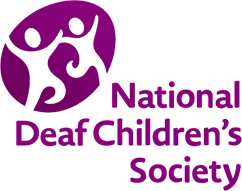Hearing aids
Last reviewed: 25 June 2024
Hearing aids are electronic devices designed to make sounds louder and clearer. There are several different types of hearing aid available. If your child uses hearing aids, they will be fitted with the most suitable hearing aid depending on the type and level of their deafness.
By using your child’s hearing test results, the hearing aid can be programmed to meet their deafness and needs.
Hearing aids can give deaf children greater access to speech sounds, which can help with their spoken language development. However, hearing aids do not restore ‘normal’ hearing. A deaf child wearing hearing aids will not be able to hear in the same way as a hearing child. They may still struggle to hear if the speaker is not facing them, is too far away or if there’s lots of background noise.
You and others can help make listening easier and clearer for your deaf child by:
- using deaf-friendly communication methods
- improving the acoustic (listening) environment
- using other technologies with their hearing aids (such as soundfield systems and radio aids).
Who can wear hearing aids
Hearing aids can be useful for babies and children with any level of deafness. The type of hearing aid that will be suitable for your child will depend on the type and level of deafness they have.
Hearing aids can also be used on a temporary basis for children with glue ear. For children who have repeated problems with glue ear or can’t have grommet surgery, hearing aids can be very helpful.
How hearing aids can help spoken language development
Early and consistent use of hearing aids means that deaf children are more likely than ever to start school with similar speech and language levels to their hearing peers.
To develop their hearing pathways, babies and young children need auditory stimulation. When hearing pathways aren’t stimulated by sound early in life (known as auditory deprivation), they don’t develop as well as they could. So it’s important to make sure that your child wears their hearing aids as much as possible while they're awake.
Speech development depends on hearing both your own speech and the speech of others. Children must be able to hear their own speech clearly to make clear speech sounds. By hearing the speech of others, children copy sounds and words and learn how to differentiate between sounds.
Very young children gain about 90% of their knowledge about their world by overhearing conversations happening around them. This is known as incidental learning. Incidental learning helps children build vocabulary and gives them grammar and general knowledge. Deaf children may miss a significant amount of information and learning opportunities if they can’t overhear the world around them.
Learn more about hearing aids
Become a member for free, and we’ll send you information about the topics you’re most interested in – like hearing technology – tailored for you and your child.
